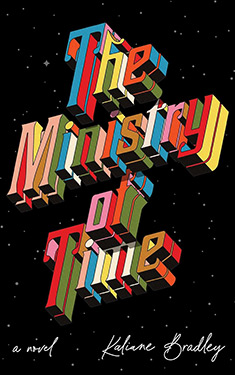| ||
| Random quote: "No matter what they may have done in life, they must have started out innocent, as do we all, so don't be too hard on them. It was your fault for making them Human, which was a dirty trick. If you are out there somewhere, you ought to be ashamed of yourself." Valiha's remarks over 13 dead humans - John Varley (Demon) - (Added by: gallyangel) |
 Science Review: Enemy Mine (1985) Science Review: Enemy Mine (1985)Moderators: Admin Jump to page : 1 Now viewing page 1 [25 messages per page] | View previous thread :: View next thread |
| General Discussion -> Film & Television | Message format |
| Deven Science |
| ||
Uber User Posts: 202  Location: Sacramento, California | This was cross posted in my blog, but I thought I'd also share it here. I did no editing, so that it says that it's the second installment, when I never posted the first one here, but there is a link, and I just hoped to get a conversation going here, as well. My Science Review takes a look at science fiction movies, but from a different perspective, focusing solely on the science of the film, both what they got right, and what they got wrong. Enjoy. For my second installment of my Science Movie Reviews, I thought I'd try the 1985 classic sci-fi movie Enemy Mine, starring Dennis Quad and Louis Gossett, Jr. I had another movie in mind, but I watched this one, and decided to take some notes. The movie opens with a space battle between the humans and a reptilian race called the Dracs. Dennis Quad provides us with a voice over, wherein he explains that it is the late 21st century, and while trying to colonize the galaxy, we found the Dracs already there. So what did we do? What humans always do, we proceeded to try and kill them to get them out of the way. Now, the movie doesn't really clearly say that we are the bad guys in this war, but it is implied, which I found interesting. It's something that I'm sure I didn't notice when I saw this as a kid. Now, in this battle, small fighter-type ships are dog-fighting through space, trying to blow each other up. First, let's get the most obvious and most broken rule out of the way. There is no sound in space, blah blah blah, we've been over this one a hundred times. There is no medium for sound vibrations to move through, so there is no sound in space. It's amazing how movies love to use the line "In space, no one can hear you scream", but then they make sure that you can hear them scream, or shoot, or whiz by like you're cutting through wind, etc. The other issue I had with this scene has to do with the maneuverability of the ships. The ships were made to Dodge, Dip, Duck, Dive, and Dodge. The only problem with this is that ships on Earth rely on wind resistance and gravity to perform these amazing feats of daredevilism, neither of which exists in the middle of space, well away from the gravity well and atmosphere of a planet or star. maneuvering through space takes either using the gravity pull of a planet or celestial object, such as slingshoting around a moon to build up speed or change your direction, or good old simple thrusters. These ships in the movie used no thrusters, but rather instead had jets which pointed out of the rear, like the fighter or commercial jets used here on Earth. Were those their only propulsion, they would be really good at moving forward (as they see it), but every other direction would be impossible for them. Those kind of dog fighting stunts are all but impossible out in space, or at least they would look very different if you did manage them. The thrusters pushing them about would make them much less graceful, much more clumsy in appearance. Eventually, two of the fighter ships crash on a nearby planet, one from each side. These ships crash in what appears to be slow motion. a crash landing while barreling through the atmosphere would be much faster, and have much less control, I would guess. Not to mention that those ships don't look capable of entering the atmosphere of an Earth-like planet. The atmosphere would probably burn those ships up as they attempted entry (not re-entry, as they did not start on this planet), and bake the pilots crispy as the hulls of their ships became as hot as an oven. Once on the ground, we have more narration, in the form of speculation as to the appearance of the Dracs, from a scared human, who's never seen one in real life. He mentions that they are asexual. That is, there are no splitting of the sexes. A Drac has all the necessary reproductive organs to reproduce without the need to couple with another Drac. When "the time is right", a Drac simply becomes pregnant, with no control over when that time will come. As seen in the movie, the time may come at a very bad time, so that when the Drac character "Jerry" speaks of "the time" being "right", he is speaking from a religious standpoint. As the two get to know each other, and even become friends, we learn that Dracs are very social and religious peoples. I find that interesting, considering that much of our social interactions are rooted in the desire to propagate. Institutions like marriage, in all it's forms, may not be in existence if not for the biological need to couple to produce offspring. It's never mentioned whether or not Dracs seek companionship with one another beyond friendship, but I would have been interested in learning that. Social questions aside, for a lifeform to produce offspring asexually is entirely possible, and is done by many lower forms of life here on Earth. The child born by this process is essentially a clone, as it is a copy of it's parent, with no other outside influence on it's born characteristics. Mutations or chromosomal combinations may allow for the child to not be a perfect copy in appearance and behavior, but it's is still a clone. And now, some discussion of the planet. The fact that both species prosper on this planet, tells us that both species, though having evolved on two different worlds, breath the same atmosphere. Now, the Earth's atmosphere is made up, roughly speaking, of 78% Nitrogen, 21% Oxygen, and 1% all other gases, including Carbon Dioxide. Humans breathe the Oxygen in the atmosphere, and exhale Carbon Dioxide. Plants are reversed, so that we are dependent on each other for the needed air to breathe. Most paleontologists and other specialists agree that Earth in it's infancy had much more Carbon Dioxide, and very little Oxygen, and that because plant and algae life, which developed millions or even billions of years before animals did, the byproduct of all that plant life slowly changed the composition of the atmosphere. To the existing life, this happened so uncomprehendingly slow, that they would not have noticed. Life that was not poisoned by the ever increasing Oxygen simply would have thrived just a little bit better than those that were negatively effected by it. Now it's possible that our human protagonist breathed in the Oxygen, while our antagonist-turned-co-protagonist breathed the Nitrogen, so that they could both co-exist on the planet, despite such amazing differences, but this theory is flawed. This is not Earth. Nothing states that this planet has Nitrogen in it's air. The only thing we can be sure of is that it has Oxygen, and that any other elements are not poisonous to humans. Well, humans or Dracs. But then there is another step in this, and that is that Drac food brought by the reptilian in his ship is nutritious, if nasty to the taste, to the human. This further speaks of an amazing parallel in the evolution of the two species. Our two home worlds must be very similar. The size and age of our suns, the distance of our home planets from that sun, water content, trace elements in the crust and oceans, all of these things must have been mirrored, so that life as we know it, almost exactly as we know it, evolved on the Drac homeworld as it did Earth. How likely is this scenario? We have no way of knowing at this time. Xeno-biologists look mostly for life as we know it, as scientists run under the theory that Earth is typical or average, and not exceptional. However, it seems more likely that life on other planets might not be compatible with humans. Their food would have no nutritional value to us, or even be poisonous. Their air would be problematic or fatal to us. This is not addressed enough in science fiction as I think it should be, so that most likely two races would be able to colonize the galaxy side by side, since any planets found would be either Earth-like, or in this case, Dracon-like, making fighting over them pointless. But, this is all fun speculation, as until we encounter those Dracs, or any other life on a different world, we just don't know. Still speaking of the planet, it also stylishly sports multiple moons, one of which is so huge in the night sky, that it's either a twin planet, similar in size to the planet itself, or it's extremely close, so that it fills up the sky. Either option is bad, and would most likely contribute to a state of no life on the planet. Tides powerful enough to resurface the planet would result. The world would constantly be busted up by volcanoes or quakes (not earthquakes, since it's not Earth, although one could use "earth" it it's generic form, meaning ground, or dirt), causing the surface to be constantly changing. Such a volatile planet would probably not evolve life, as there would be nothing stable to purchase itself to. Were there oceans, which there may well have been, though none were ever shown, then it's possible that the water of the oceans would have made a shock absorbing environment, allowing ocean life to evolve without many problems. In fact, the turmoil caused by the quakes may have even sped up ocean life evolution, as the churning of water is believed by some experts to be a contributing factor in assisting the formation of the basic building blocks of life. This may be, but the turtle-like creatures, or the ground carnivores that eat them, would not have had time to live and evolve on an ever changing surface. This doesn't even factor in that the planet has "meteor storms", which are powerful, and cover much of the land surface, obliterating any infant life that may have been forming. The meteors were also a source of some bad science, as these meteors don't leave any kind of crater. The land looks rough and uninviting, but it's not shaped by meteors, and it looks more like it was shaped by volcanism. There were no meteor craters seen, unless the pits used by the underground creatures were once meteor craters, but they are too few and far between to be the case. In one dramatic scene, trust between the two is made more solid when one saves the other's life from one of the aforementioned underground creatures. Our human is being dragged into the creature's pit by it's powerful feeler/tongue/appendage, when the Drac shoots the creature, showing us a thick blue blood. Oddly colored blood is a common way for filmmakers or TV show producers to show that these people or creatures are different from us. On Star Trek, Vulcans had green blood, Romulans had Blue, and the otherwise manly Klingons had pink blood. It's speculated that this might be possible even if all of this blood is still hemoglobin based. Our hemoglobin contains iron, which is partially responsible for blood's color. This is my understanding, as I'm weaker in biology than I am in physics or astronomy. So, if the molecule of a race's hemoglobin were to have a, say, copper atom in the center, rather than iron, would it not be blue or green then? I think this very theory was once used in Star Trek, if I'm not mistaken. Would it actually work, or is this technobabble? I'm not sure. But it's cool to think about. Upon the birth of a Drac child, the movie focuses more on the drama than the science fiction aspects, and it's a very good movie. That last thing I'll talk about it a fatal flaw in it's futuristic fortune telling. In the second half, our human "Uncle" is teaching the young Drac how to play American football, mentioning the team the Houston Oilers. It may be the late 21st century, but the Oilers didn't even make it to the end of the 20th century by that name. In 1999, they were renamed the Titans, because of their relocation to Tennessee, which is not known for it's oil. Movie rating: Four and a Half Stars out of Five Science Movie Rating: Three Stars out of Five | ||
| |||
| Wan_2 |
| ||
New User Posts: 1  | Aren’t these movies the coolest? I always make sure my kids are watching something knowledgeable, series and movies they learn from and this is the reason I have shortlisted some of the series by Andy Yeatman on Netflix for them. Also, thanks for this movie review, it can be worth showing as well. | ||
| |||
| Deven Science |
| ||
Uber User Posts: 202  Location: Sacramento, California | Thanks for your comment. Man, I almost forgot about these science movie reviews. It's been some time since I've done one, as they were a lot of work! | ||
| |||
| Jump to page : 1 Now viewing page 1 [25 messages per page] |
| Search this forum Printer friendly version E-mail a link to this thread |
Books
BOOK AWARDS
Hugo Award
Nebula Award
BSFA Award
Mythopoeic Award
Locus SF Award
Locus Fantasy Award
Locus FN Award
Locus YA Award
Locus Horror Award
August Derleth Award
Robert Holdstock Award
Campbell Award
World Fantasy Award
Prometheus Award
Aurora Award
PKD Award
Clarke Award
Stoker Award
Otherwise Award
Aurealis SF Award
Aurealis Fantasy Award
Aurealis Horror Award
Andre Norton Award
Shirley Jackson Award
Red Tentacle Award
Golden Tentacle Award
Legend Award
Morningstar Award
Nommo Award
BOOK LISTS
Classics of SF
SF Mistressworks
Guardian: The Best SF/F
NPR: Top 100 SF/F
Pringle Best 100 SF
Pringle Modern Fantasy
SF: 101 Best 1985-2010
Fantasy 100
ISFDB Top 100
Horror 100
Nightmare Magazine 100
HWA Reading List
Locus Best SF
200 Significant SF Books by Women
David Brin's YA List
Baen Military SF List
Defining SF Books:
50s | 60s | 70s | 80s | 90s
SF by Women Writers
A Crash Course in the History of Black Science Fiction
Authors
Top Authors
All Authors
All Women Authors
AUTHOR AWARDS
Damon Knight Memorial
World Horror Convention
WFA Life Achievement
Cordwainer Smith Rediscovery
AUTHOR LISTS
Starmont Reader's Guide
Publishers
Top Publishers
All Publishers
PUBLISHER LISTS
Ace Doubles Series:
D | F | G | H | M | #
Conversation Pieces
Classic Library of SF
Critical Explorations in SF&F
EP Masterpieces of SF
Fantasy Masterworks
SF Masterworks
Laser Books
Liverpool SF Texts and Studies
Author's Choice Monthly
Pulphouse Short Stories
Winston SF
Resources
Podcasts
BookTubers
Magazines
Conventions
eBooks
Bookstores
SF/F/H Sub-Genres
Websites
Clubs & Groups
WWEnd
BookTrackr™
The Responsible Parties
WWEnd Patrons
Support WWEnd
Advertise on WWEnd
FAQ
Contact Us
My World
Sign Up now and enjoy the enhanced features only available to members.
Blog
2025 Prometheus Award Winner
2024 Shirley Jackson Award Winner
Guest Post: Introducing the 2025 Writers of the Future Epic eBundle
2025 British Fantasy Awards Shortlists Announced
2025 Arthur C. Clarke Award Winner
Forums
Home | © 2025 Tres Barbas, LLC. All rights reserved.
| (Delete all cookies set by this site) | |



















 Full Details
Full Details Forgot your Password?
Forgot your Password?




